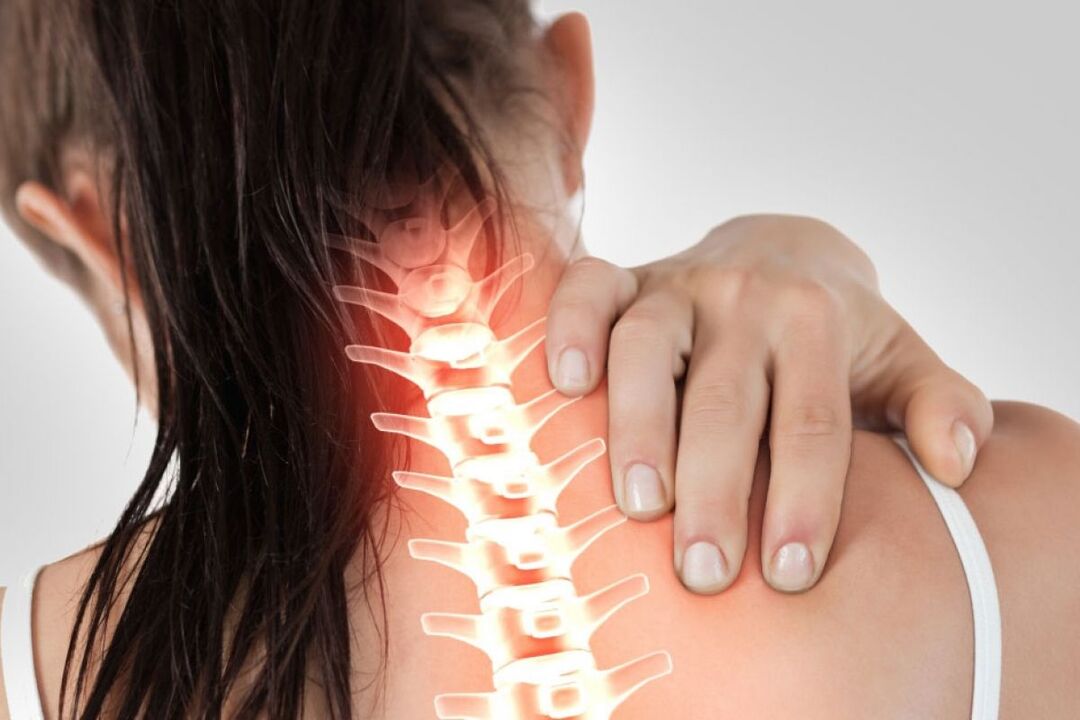Osteochondrosis is a process in which cartilage tissue degenerates, ages, degenerate and transforms into a kind of bone. In order to understand the problem of osteochondrosis, you need to imagine the structure of the spine: it is made up of 35 vertebrae, which are one column above the other, forming a spine. Between the vertebrae are "cushions"-cartilaginous discs (they act as shock absorbers and lubricants when the vertebrae move). The intervertebral discs consist of a rigid multilayer ring and a liquid gel-like core in the center.
In order to understand the problem of osteochondrosis, you need to imagine the structure of the spine: it is made up of 35 vertebrae, which are one column above the other, forming a spine. Between the vertebrae are "cushions"-cartilaginous discs (they act as shock absorbers and lubricants when the vertebrae move). The intervertebral discs consist of a rigid multilayer ring and a liquid gel-like core in the center.
Symptoms of cervical osteochondrosis:
Everyone knows that the spine becomes thinner in the structure close to the head. The upper vertebrae that make up the cervical spine are long and delicate, but very strong and flexible. However, their strength is not unlimited, especially when the daily pressure on the neck exceeds normal levels. The main cause of cervical osteochondrosis is always hidden in these loads.
The manifestation of cervical osteochondrosis also depends on the type of load and the location of the intervertebral disc injury: each nerve root is responsible for a specific function, therefore, the manifestations of cervical osteochondrosis are varied. The development of the disease is divided into 4 stages. Each of the next ones is harder than the previous one.
Stage 1 cervical osteochondrosis:
How does our spine prevent overuse and destructive physical activity (or inactivity)?
First of all, uncomfortable: stretching, tingling, shooting-all these are the first signs of spinal disease.
Cervical intervertebral osteochondrosis begins with tension and fatigue in the neck muscles. When turning and tilting the head, the patient may feel a slight pain and crunch. Many times, this discomfort is considered "maybe cold" or "I'm tired of something".
remember! Pain is a signal. We can say that it is a signal from our body. If it works, it's not only that. Pain cannot be ignored or numb with pills!
Phase 2:
When turning and tilting the head, the patient already feels more severe pain. Sometimes the pain radiates (spreads) to the right or left arm, shoulder joint, and sometimes it radiates to the hand.
In the nervous system, there are still rare headaches, fatigue, fatigue, and absent-mindedness (the initial symptoms of cervical osteochondrosis in women are very similar to the periodic symptoms of the reproductive system: headache, dizziness, weakness, fatigue).
Even though the signs of cervical osteochondrosis are already obvious, there is still a chance to prevent the development of the disease and the emergence of complications in the second stage. It is particularly important to prevent the development of hernias, which can become dangerous in the cervical spine due to loss of mobility and impaired blood supply to the brain.
Phase 3:
By the third stage, this disease can be considered neglected, because the treatment of cervical osteochondrosis at this stage is much more difficult, and the damage is often irreversible. As intervertebral hernias begin to appear, the pain increases.
Persistent weakness and dizziness-due to the compression of the nerves and the large blood vessels in the cerebral cortex, it will also increase. Pain often occurs in the hands. The innervation of the upper limb muscles is disturbed, so they are weakened. Numbness and tingling in the hands are common symptoms of third-degree degenerative disc disease in the neck.
Phase 4:
The intervertebral disc has been significantly damaged and major changes have taken place. Hernia and herniation of each intervertebral disc have a major impact on the health of the patient. Instead of the damaged disc, connective tissue appeared, which deprived the spine of flexibility.
Compression of nerves and blood vessels can lead to impaired coordination. Pain, drowsiness, drowsiness, and dizziness are more serious. In addition, there are tinnitus. The risk of diseases caused by osteochondrosis is high:
- When the vertebral artery is compressed by hernia pressure, it will cause cerebral ischemia and develop into spinal cord stroke;
- Vasoconstriction can cause malnutrition in the cortex or lower part of the brain. Result-impaired perception, loss of consciousness;
- Compression of the spinal cord can even be fatal.
























